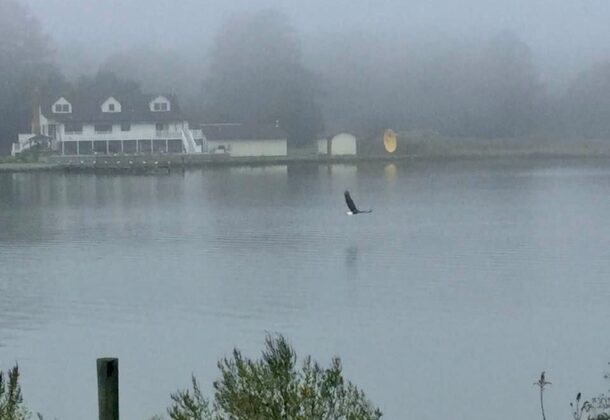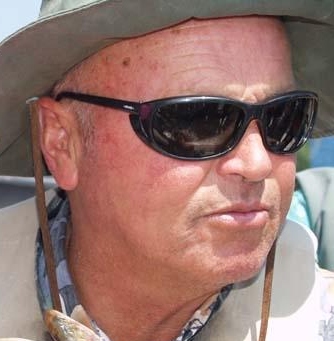Message from the Cap’n — As the Bald Eagle Flies

Message from the Cap’n is a compilation of fishing advice, waterman and weather insights, Chesapeake lore, and ordinary malarkey from the folks who keep their feet wet in the Potomac and St. Mary’s rivers.
After another good dusting of snow, my reflections turn to our “Rulers of the Sky in Winter: The Bald Eagle.”
Bald eagles live in Maryland year-round, reports Friends of Blackwater, and protect about a mile of shoreline or territory.
They live a long time — up to 40 years in the wild, according to AvianReport.com, which has nine more interesting facts about them, including their holding of the record for the largest bird nest ever recorded.
And they mate for life, choosing their mate when they are around 4 or 5 years old.
They nest in the winter (details of who does the building at National Eagle Center) and have a varied diet. The National Fish and Wildlife Service describes eagles as opportunistic feeders, with fish comprising much of their diet. They also eat waterfowl, shorebirds, colonial waterbirds, small mammals, turtles, and carrion (often along roads or at landfills).
An interesting scenario in St. Mary’s County usually takes place on fields across from Third Base Store in Loveville, MD, where a deer processor spreads ground carcasses in his fields. Eagles are early risers and are the first to locate the feast. They’re followed by the buzzards who come later in the morning. Just the sound of the grinder alerts the eagles, sometimes drawing as many as 30 eagles early in the morning.
I’ve noticed when working in the St. Mary’s River that no ducks are setting on the water when the eagle is on the wing. Buffleheads (also known as Dippers) and Ruddy Ducks (also known as Iron Heads) make a good meal for bald eagles mostly every day.
Avid hunter Steve Decker describes an eagle hunting as “laser focused and from an avionics point of view, there is a lot going on with all parts working together perfectly in concert, wings, tail, legs, talons, and line of sight. It is really a thing of beauty.”
Bald eagles use material from osprey nests to “feather their own nests.” I have personally witnessed eagles raiding osprey nests in the Island creek, taking every stick over to the woods at Camp Merryelande to add material to their own nest.
After the osprey have left to overwinter in South America, we see bald eagles using the osprey nests as lookout stations. They don’t usually build there because they are so bleak and open to the elements. Eagles usually nest atop trees at the edge of a forest.
Oyster production is falling with the wind and cold weather limiting the number of days that are able to be worked. Oysters stop feeding once the water gets cold and as a result quality falls off, causing an adjustment downward in price. The price still hovers around $40 per bushel.
Stay safe as we are on a countdown to spring. It’s coming, but earlier this week the Interpretive Buoy System reported the lower Potomac water temperature was 39.2 degrees Fahrenheit and salinity at 14 parts per unit. This snow last week caused a five-degree temperature drop.
Till next time, remember “It’s Our Bay, Let’s Pass It On.”
To learn about tours and trips into the Chesapeake, keep in touch with Fins + Claws on Facebook . Catch up on Messages from the Cap’n Member Page. Please visit Cap’n Jack’s lore and share with your social media sites. Or reach him here: [email protected] or 240-434-1385.
























